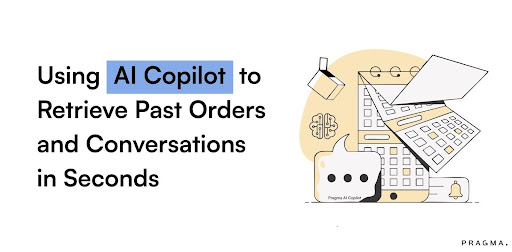What is RFM Automation?
RFM Automation combines the traditional RFM (Recency, Frequency, Monetary) segmentation model with automated workflows and triggers.
It allows D2C brands to instantly act when a customer’s recency drops, frequency changes or monetary value shifts — all without manual intervention.
For example, when a high-value customer hasn’t purchased in 90 days (Recency falls), an automated win-back campaign can launch via WhatsApp or email. By embedding RFM logic into automation, brands turn passive data into active growth tools.
Why RFM works for D2C brands
D2C brands thrive on direct relationships, rich customer data and rapid feedback loops. RFM is highly effective here because:
Recency identifies re-engagement opportunities before loyalty slips.
Frequency shows who buys often and can be scaled into subscriptions or VIP tiers.
Monetary reveals your high-spend, high-value customers worthy of special attention.In Indian D2C contexts, where repeat purchase behaviour is less predictable and acquisition costs are high, RFM lets brands segment intelligently and target the right customers with the right message — driving higher CLV, lower churn and more efficient marketing spend.
Impact of RFM Automation on D2C Brands 📈
A Marketing Automation stratagem that helps increase OR by 29%, CTR by 41%, and Conversion Rates by 49%
Marketing Automation is key in the present Omnichannel era of communication.
Because with the rise in communication channels, it becomes more and more difficult to manually communicate with individual customers or potential customers.
Practical & Customised Marketing Automation depends on 3 elements:
- Events
- Conditions and
- Actions
And based on this theory, the most successful of all Marketing Automation is ‘RFM Automation’
It stands for Recency, Frequency, and Monetary, which are three key metrics used to understand customer value and engagement.

- Recency: customers who have made a purchase within the last 30-90 days may be considered "short" while those who haven't made a purchase in over 6 months may be considered "long." The percentage of customers in each segment may vary depending on the business, but a common breakdown is as follows:
Short: 20-30%
Medium: 30-40%
Long: 30-50%
- Frequency: customers who make multiple purchases per month may be considered "high frequency" or “casual buyer”, while those who only make one purchase every few months may be considered "low frequency" or “common buyer”.
High frequency: 10-20%
Mid-range: 50-60%
Low frequency: 20-40%
- Monetary: customers who spend a high amount per purchase may be considered "high value" or “spender”, while those who spend very little per purchase may be considered "low value" or “saver”.
High value: 10-20%
Mid-range: 50-60%
Low value: 20-40%
FACTS!

- Businesses that use RFM analysis to segment their customers see an average increase in revenue of 10-15%.
- Personalised campaigns based on RFM analysis can increase open rates by 29%, click-through rates by 41%, and conversion rates by 49%.
Key outcomes RFM Automation delivers
- Customer retention rate: Increase customer retention by detecting a decrease in their shopping activity and automatically launching engaging win-back campaigns
RFM analysis can help businesses identify customers who are at risk of churning. By targeting these customers with personalised marketing campaigns, businesses may be able to improve customer retention rates. The percentage of customers who are retained after a specific period of time (e.g., 30 days, 90 days, etc.) may vary depending on the business, but a common goal is to retain at least 50% of customers over the first 90 days. - Increase Customer Life Value (CLV) and increasing profits by directing up- and cross‑selling campaigns to the most loyal users
- Average order value (AOV): Optimise the base activation costs by adjusting the amount of discounts for the next purchase depending on the customer's value.
RFM analysis can help businesses identify customers who have a high Monetary score and target them with promotions or offers to increase their AOV. The average order value may vary depending on the business, but a common goal is to increase the AOV by at least 10%. - Predictive analytics: Predictive analytics involves using data and statistical algorithms to make predictions about future customer behaviour. This can help businesses anticipate customer needs and preferences and tailor their marketing efforts accordingly.
How RFM Automation Works: Events, Conditions, Actions
The backbone of RFM automation is an “ECA” loop: Event → Condition → Action.
Events:
A tracked activity (e.g., last purchase > 90 days, frequency drops below 2/month).
Concrete use cases & playbooks
The checks (e.g., customer’s monetary value flag is “high spender”).
Actions:
Automated workflows (e.g., WhatsApp message offering bundle, email with VIP invite, SMS alert to sales team).
For example: When recency > 90 days and monetary value is “high”, trigger a personalised VIP re-engagement message. This structured logic ensures your brand reacts exactly when the segment shifts — not too early and not too late
Conclusion:
1. Automatically respond to a decrease in shopping activity
Retention
Automated WhatsApp/Facebook/Instagram/SMS/Email notification with product recommendations when the user has changed the segment from common / regular to casual customer.
Retargeting
Automatically adding to Custom Audience and launching platform specific campaigns when a spender/user has changed the segment to Medium.
2. Increase customer engagement
LTV increase
Reactivation of users whose time since the last purchase is long and the frequency of purchases low, through personalised campaigns containing recommendations and special offers as well as discount codes.
3. Adjust the content to the customer's shopping preferences
Personalisation of messages
Informing “common spenders” about new products, while about promotions for “casual savers”.
4. Take care of active users
Loyalty program
Special offers, discount coupons, rewards for users who spend the most and return most often. Use data generated by RFM analytics to build a loyalty program.
Measurable KPIs & benchmarks to track
To know if your RFM automation is working, monitor these metrics:
- Repeat Purchase Rate (30/60/90 days) — target +10-20% uplift.
- Average Order Value (AOV) — aim for +10% within 90 days.
- Customer Lifetime Value (CLV) — track uplift across segments.
- Segment Shift Rate — rate at which customers move from “Low” to “Mid/High” categories.
Marketing Cost per Customer — reduced by focusing on high-value segments. Use the benchmarks defined earlier (e.g., high-monetary segment % = 10-20 %) to compare against your brand performance and set realistic targets.

FAQs (Frequently Asked Questions On RFM Automation: Boosting Revenue & Customer Engagement for D2C Brands)
1. What is RFM Automation and why is it important for D2C brands?
RFM Automation uses Recency, Frequency, and Monetary data to segment customers and automate personalised marketing, leading to improved engagement, higher open rates, click-throughs, and conversion rates.
2. What are common use cases of RFM Automation for D2C brands?
Use cases include automated reactivation of inactive customers, retargeting medium-value users with campaigns, personalisation of messages based on spending habits, and loyalty programmes to reward top customers.
3. How does RFM Automation integrate with marketing channels?
It triggers automated messages and segmented campaigns across WhatsApp, Facebook, Instagram, SMS, and email, delivering the right content to the right audience at scale.
4. How can D2C brands get started with RFM Automation?
Identify key RFM segments using your customer data, connect to automation platforms like Pragma, set up personalised campaigns with triggers based on customer behaviour, and monitor performance continuously for optimisation.
5. What is the typical customer retention goal when using RFM?
A common retention target is to keep at least 50% of customers active over the first 90 days post-purchase through personalised interventions.
Talk to our experts for a customised solution that can maximise your sales funnel
Book a demo


.webp)
.webp)
.png)